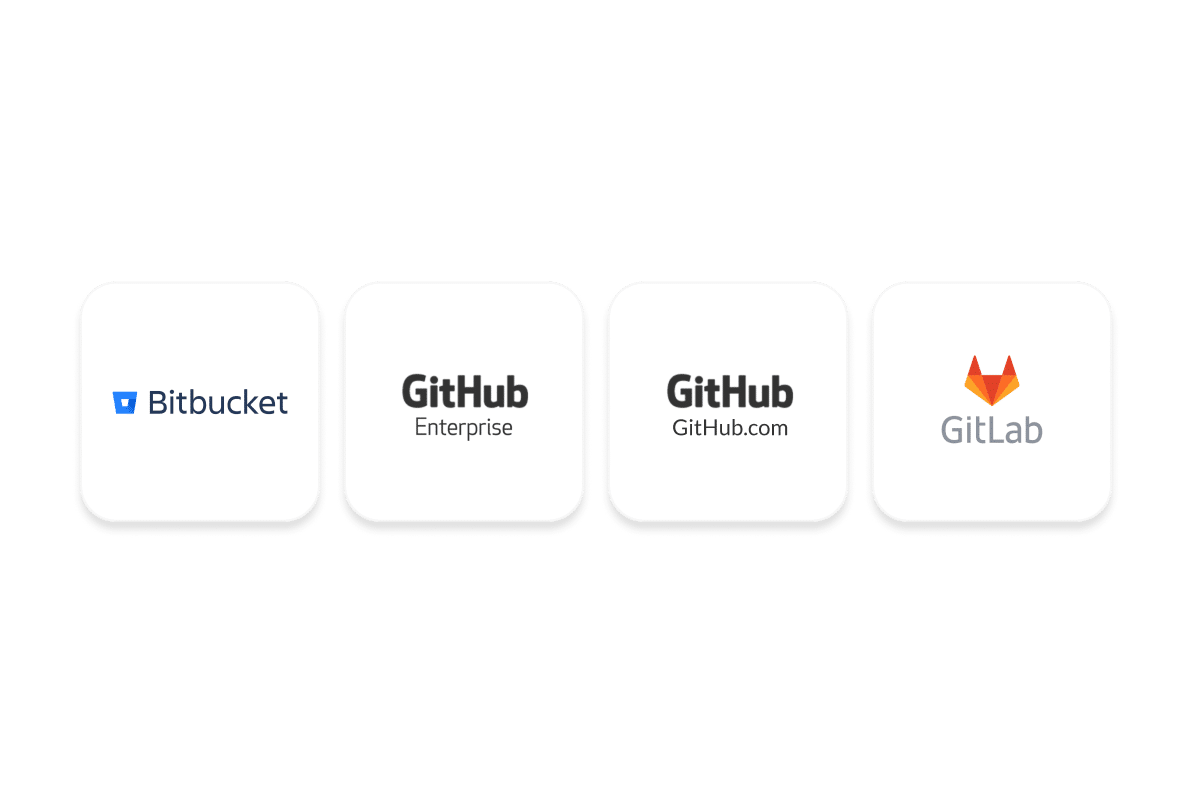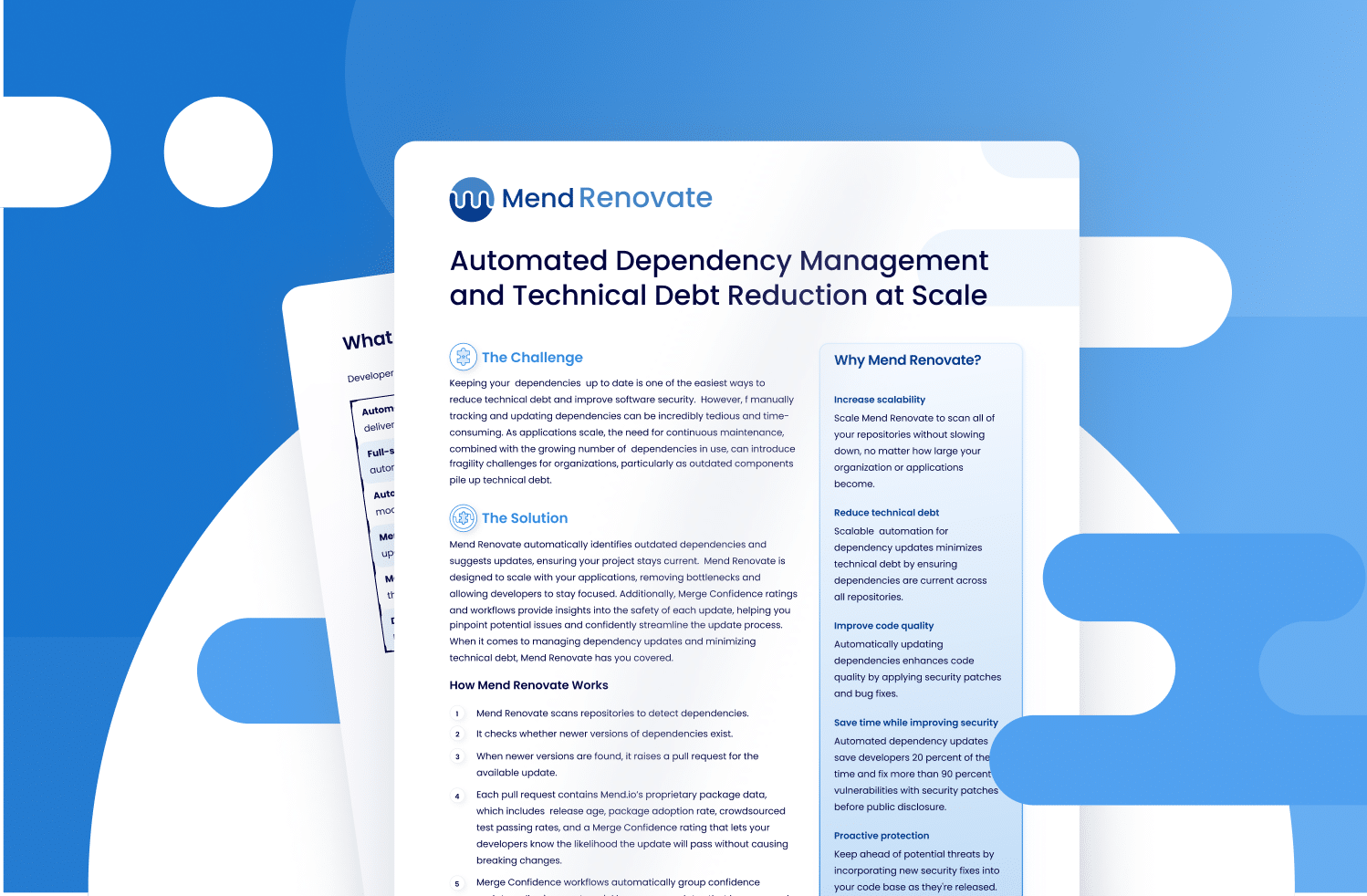Mend AppSec Platform:
Mend Renovate
Enterprise-grade dependency updates
Mend Renovate Enterprise reduces risk, improves code quality, cuts technical debt and improves time to release by automatically ensuring all dependencies are kept up to date.


Cut security risks up to 70% with full-scale automated dependency updates
Automated dependency updates
Streamline the process of keeping your software projects up-to-date and improve development efficiency.
Mend Renovate Enterprise automatically identifies outdated dependencies and creates pull requests (PRs) that suggest updates for both open source and private packages, ensuring your dependencies are always current.
Full-scale automation & support
Mend Renovate Enterprise scales to scan all of your repositories without slowing down, no matter how large your organization or applications become.
Plus, dedicated support from our team of experts ensures you get the most out of Mend Renovate Enterprise.
Technical debt reduction
Avoid development roadblocks caused by an accumulation of technical debt from outdated dependencies.
Mend Renovate Enterprise’s scalable automation for dependency updates minimizes technical debt by ensuring dependencies are current across all repositories.
Merge Confidence ratings & workflows
Mend Renovate Enterprise lets you know the impact each dependency update will have on your application.
Merge Confidence ratings and workflows prevent updates from creating extra work, by providing the likelihood an update will pass without breaking your application and grouping these updates together.
Integrates with your repos
Mend Renovate Enterprise integrates directly into your repositories to support – not overwhelm – your devs as they work on dependency updates.

Explore Mend Renovate, part of the Mend AppSec Platform
Mend Renovate Enterprise is a key component of the Mend AppSec Platform’s holistic and proactive approach to application security.

Recent resources
Stop playing defense against alerts.
Start building a proactive AppSec program.





